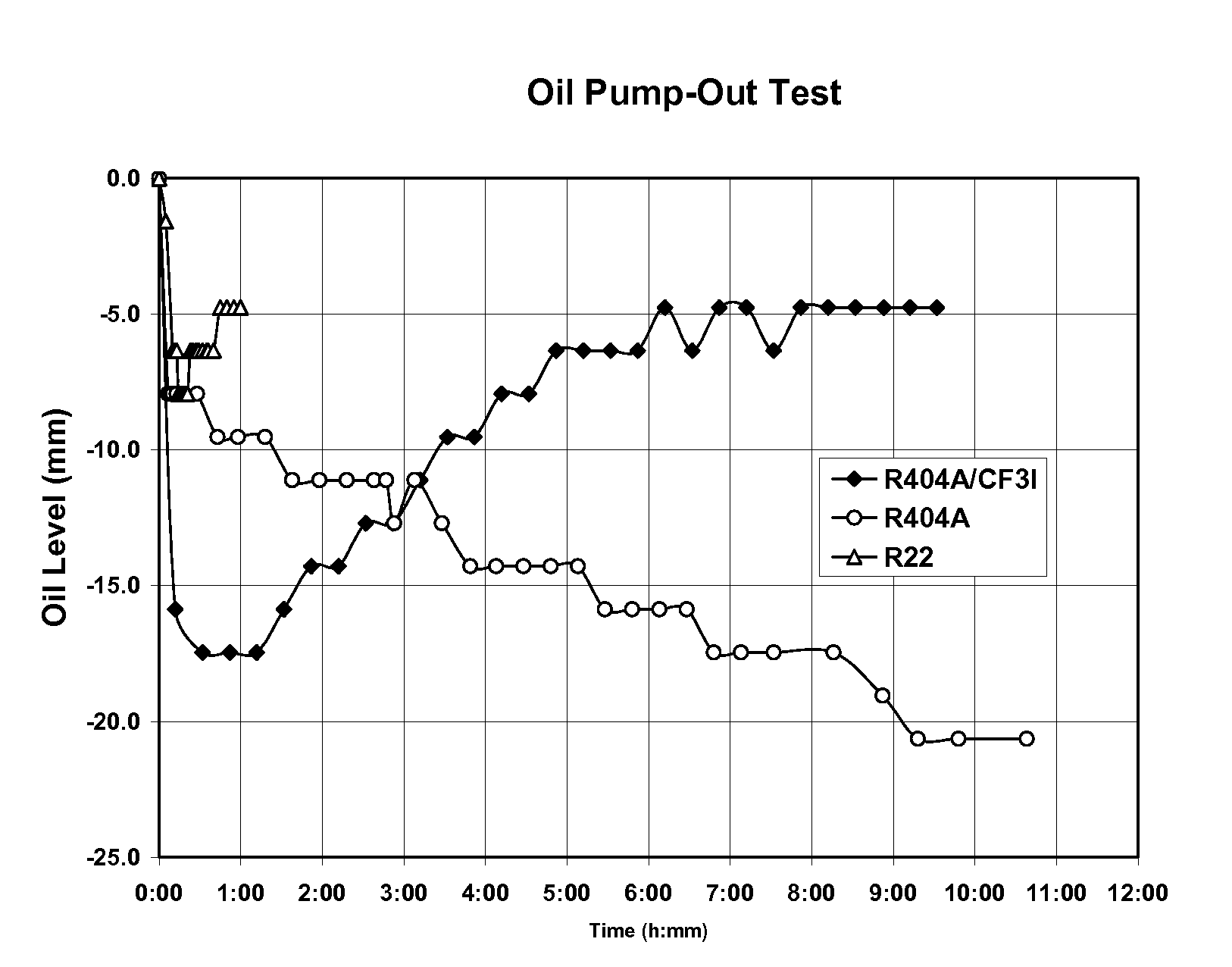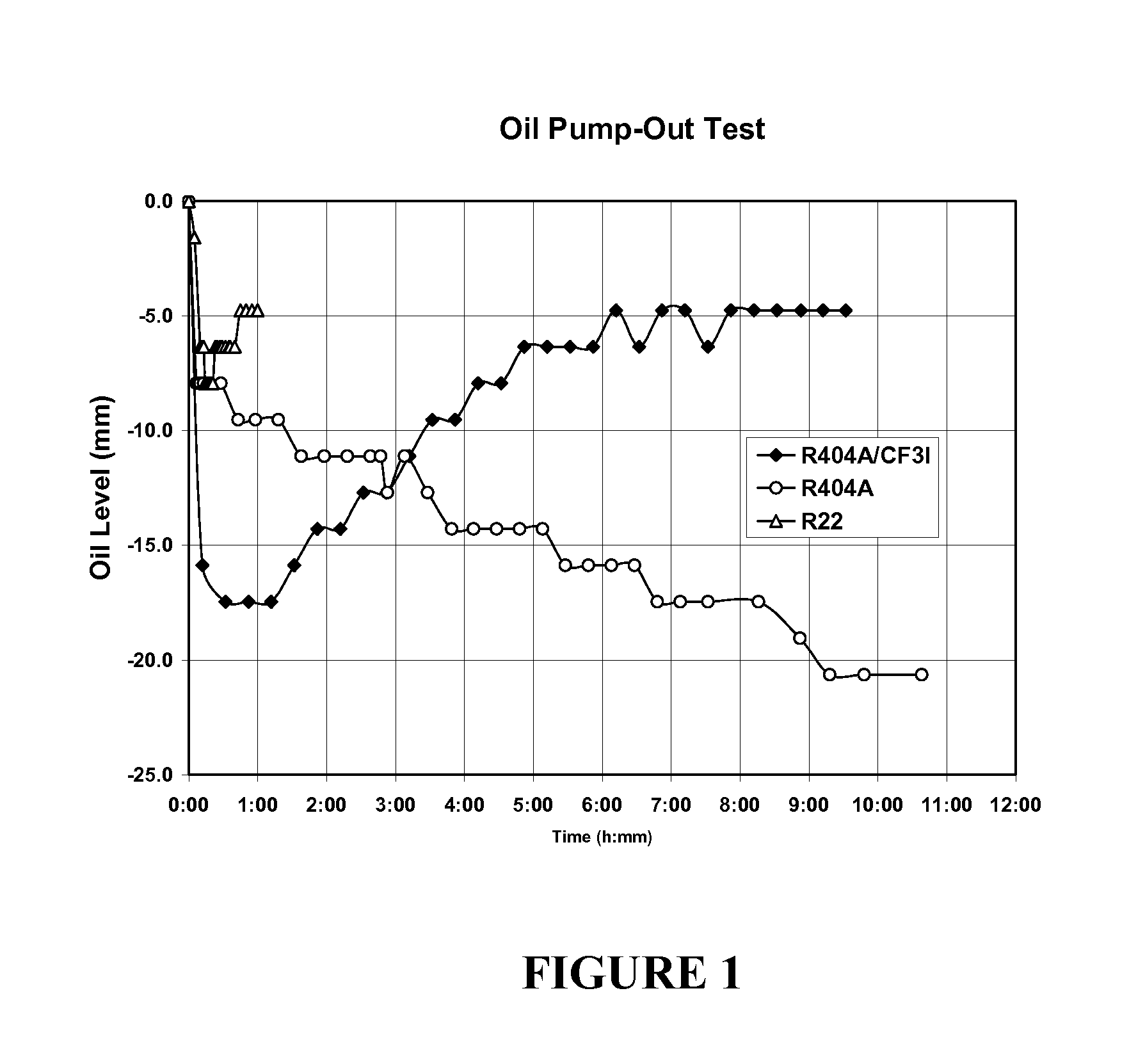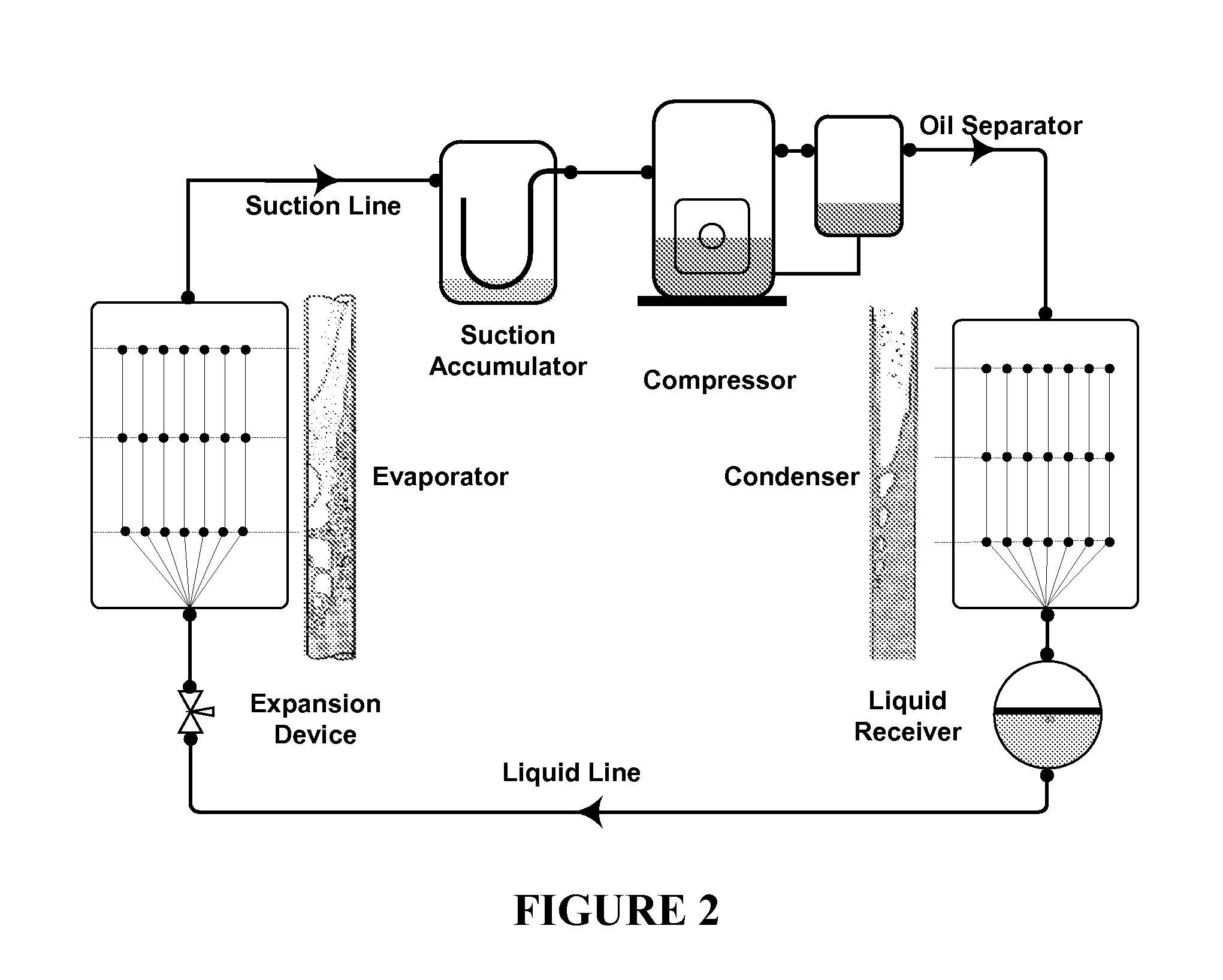Hydrofluorocarbon/trifluoroiodomethane/ hydrocarbons refrigerant compositions
a technology of hydrofluorofluoroiodomethane and hydrocarbons, which is applied in the direction of lubricant compositions, heat-exchange elements, chemical instruments and processes, etc., can solve the problems of chlorine-containing refrigerants, disfavored use of chlorine-containing refrigerants, and inability to meet the requirements of refrigeration systems
- Summary
- Abstract
- Description
- Claims
- Application Information
AI Technical Summary
Problems solved by technology
Method used
Image
Examples
example 1
Performance
[0026]This example demonstrates the thermodynamic properties of a HFC / CF3I blend. Testing was performed in a refrigeration machine under typical operating conditions using a refrigerant test mixture and mineral oil (Nu-Calgon C-3 Refrigeration Oil). The test mixture composition was 89 wt. % of HFC(R404A) and 11 wt. % of CF3I. Testing was performed using a setup similar to the unit described in Report DOE / CE / 23810-71 “Study of Lubricant Circulation in HVAC Systems,” March 1995-April 1996 by Frank R. Biancardi et. al. (prepared for Air Conditioning and Refrigeration Technology Institute Under ARTI / MCLR Project No. 665-53100), which is incorporated herein by reference. In this case, a commercial refrigeration system equipment was employed using a commercially available condensing unit and an evaporator for a walk-in freezer / cooler. The following is a detailed description of the equipment:
[0027]The condensing unit was as manufactured by Keeprite Refrigeration, Brantford, Onta...
example 2
“Oil Pump-Out” Tests
[0028]This example demonstrates that an HFC / CF3I blend has better oil return properties in a refrigeration system as compared to R-404A without CF3I. These tests utilized the same equipment as described in Example 1, with the following modifications: The oil separator located at the discharge of the compressor was by-passed, so the compressor oil level reflects actual oil movement to and from the system. The suction line was properly sized for this unit (1⅛″).
[0029]An oil level was added to the compressor, so oil migration from and to the compressor could be tracked. A high-pressure piston pump was used to inject oil extracted from the compressor sump into the compressor discharge line. This gave us the ability to simulate oil pump out conditions as described in Biancardi's report. These tests consisted in injecting 375 cc of oil, previously extracted from the compressor pump, and observing the oil level. This type of test is known as a “pump-out” test and simula...
example 3
Miscibility in a Liquid Receiver
[0030]FIG. 2 shows a typical commercial refrigeration system, which has suction accumulator and a liquid receiver after the condenser. Also shown in FIG. 3 is an immiscible refrigerant / oil combination behavior in the liquid receiver where a layer of oil would form on top of the liquid refrigerant due to its lower density. A test was developed to test solubilizing additives with two types of oils: mineral and alkylbenzenic. A liquid receiver was charged with approximately 3200 g of an HFC blend (R407C) and 39 g of oil. This blend as formulated is immiscible with oil floating on top of the liquid refrigerant as shown in FIG. 2. Next, a solubilizing additive was added until a single-phase was obtained. Table 2 shows the results obtained for two oils (MO and AB) and two additives (CF3I and isobutane). It is demonstrated that 48.3% of CF3I is needed to dissolve the mineral oil, and 38.3% is needed when AB oil is used.
TABLE 2Miscibility Tests with a Liquid ...
PUM
| Property | Measurement | Unit |
|---|---|---|
| weight percent | aaaaa | aaaaa |
| weight percent | aaaaa | aaaaa |
| weight percent | aaaaa | aaaaa |
Abstract
Description
Claims
Application Information
 Login to View More
Login to View More - R&D
- Intellectual Property
- Life Sciences
- Materials
- Tech Scout
- Unparalleled Data Quality
- Higher Quality Content
- 60% Fewer Hallucinations
Browse by: Latest US Patents, China's latest patents, Technical Efficacy Thesaurus, Application Domain, Technology Topic, Popular Technical Reports.
© 2025 PatSnap. All rights reserved.Legal|Privacy policy|Modern Slavery Act Transparency Statement|Sitemap|About US| Contact US: help@patsnap.com



